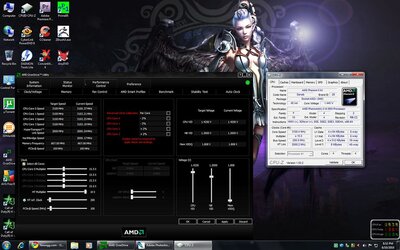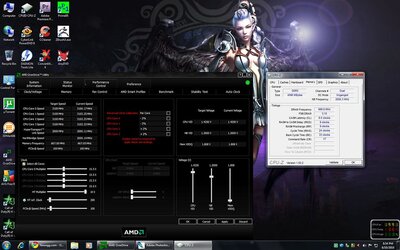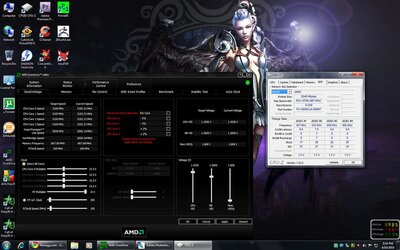Originally posted by I.M.G.O.G.:
Blackheart - if its a daily driver, what is the point of spending an entire days worth of time running benchmarks to determine stability? If you can run it for a few days and not crash, that's stable for you. If you have an occasional crash, tweak the settings.
I think overly rigorous stress testing is over-rated. If you are doing anything with your pc where an occasional crash is unacceptable, then I don't see any business running an aggressive overclock where stability is critical.
I'm not saying you are wrong, and I'm not saying it to criticize you - I'm just saying it because overclocking is a hobby and its supposed to be fun. Sometimes group think gets people thinking exaggerated things about "stable" and it loses focus of tweaking being fun and playing with settings as you go along! It doesn't have to be a boring stress testing process, unless you are struggling with problems you can't put your finger on - then its a good idea to stress test to identify where the problem resides more exactly.
Please, allow me to clarify. All throughout my life two interests of mine have been science and math, I apply the empirical method to test and corroborate the legitimacy of every thought process or idea that crosses my mind. A large part of science is validation. When we come up with new ideas and apply them in a practical environment as we test their premise we need to substantiate the results which can also help us discover problems with our methods we may not have been aware of before testing.
You're absolutely right when you saw tweaking is supposed to be a fun hobby, but when you think about it overclocking isn't much different than scientifically testing a hypothesis. You come up with an idea [your oc goal], you create the parameters to test the data [the general reference criteria for your oc settings], you test the data [experiment with different settings], and then you validate the results [ensure your system is stable]. While stress testing may be boring and tedious to you I encompass it as part of the fun process which is overclocking.
Even though it may not always be necessary it can also bring to light hidden problems within our systems which escape our attention. Any pc modder knows because computers comrpise of many different parts operating within various parameters that sometimes ***** just goes wrong, but the evidence of a problem may not always be apparent or obvious. A good example of this would be a while back when I was getting BSODs and system lockups while gaming. To investigate the issue I tried to load up event viewer so I could read the system error dump files and minidumps, but the service wasn't running. I tried to start up the windows event log service, but it wasn't available. Confused as to why I couldn't get a running event viewer I went into a command prompt and decided to check the integrity of the windows installation with system file checker. I did a "sfc /scannow" and sure enough some files, particularly iassdo.mui.dll, was corrupt. I can't tell you the number of times I've taken ownership of the corrupt files, replaced them with the originals from the Win7 dvd and rebooted, but every time I do a sfc scan the same files keep being reported as corrupt. Well, the issue with the system crashes turned out to be something different (the video card), but I wouldn't have become aware of the issue with my windows installation if I hadn't done a sfc scan. It's a peculair problem which doesn't impact system performance or my apps, but at least I'm aware of it as opposed to being completely oblivious and can keep the information of the issue as a refernce within a realm of possibilities when investigating future problems should they occur.
Now, nothing I said was meant to convey these were things stowenrat
had to do in order to test stability. He expressed a concern for temps and a desire to test for stability so I simply informed him of what I would do in his predicament. What he takes away from it and how much or how little of my suggestions he follows is on him. I wouldn't recommend anything to anyone I wouldn't do myself.
On a different note the issue with the random reboots, which I'm not currently experiencing, turned out to be with the power supply. It just isn't adequate enough to provide enough power throughput to allow me to stably unlock the quad
and overclock it. So, after starting a thread in th psu section and having a discussion with Super Nade amongst others, I've decided to go with an Antec 650W. Antec seems to be a pretty solid manufacturer so it should cover my needs.





